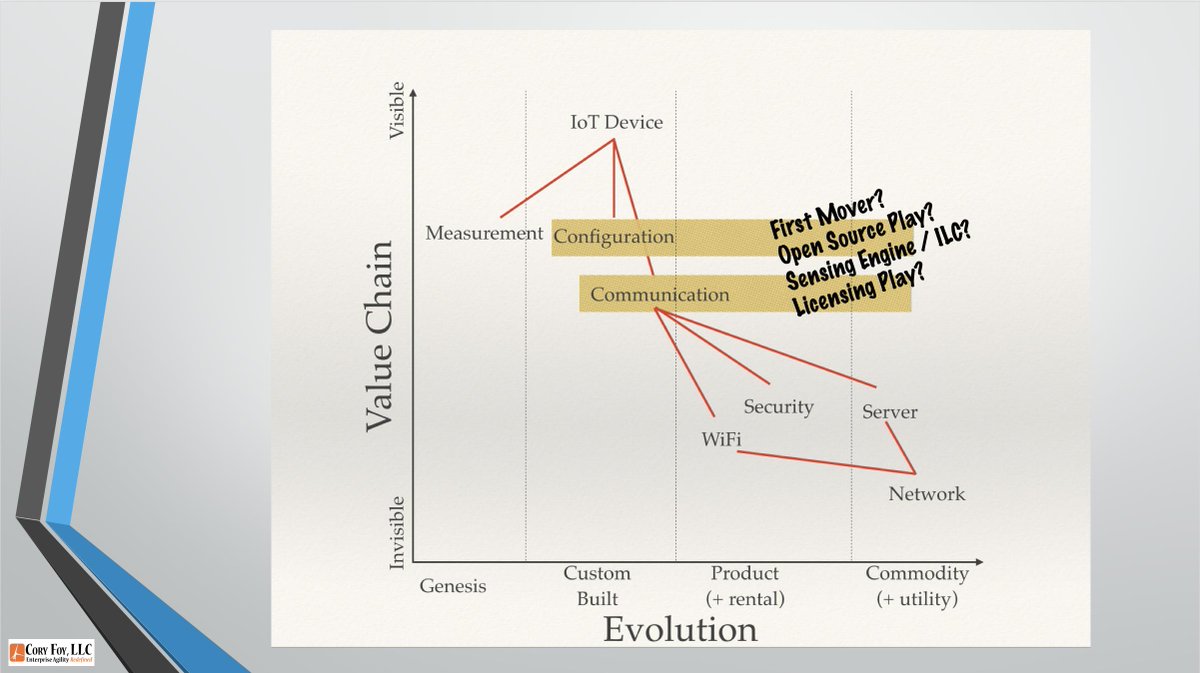Happy Mapping Monday! This week starts a new series of videos highlighting how I apply Wardley Mapping concepts for my clients and how you can think about them for your own business. This week’s video covers the basics of Gameplay, highlighting the idea of separating out and being deliberate about Where you go after opportunities versus How you’ll actually act.
The links at the end of the video are below, along with a complete transcript. If you’re interested in finding out how to apply this to your organization, don’t hesitate to reach out via Twitter or email hello at coryfoy dot com.
Links:
- Mapping talk given at Red Hat back in 2015
- Simon Wardley’s post on different types of gameplay
- The Wardley Mapping book in process
- The Wardley Map Wiki
Transcript:
Happy Monday! Welcome to a new edition of Mapping Mondays. I’m Cory Foy, and in today’s video I wanted to cover Gameplays and why you should care about them when you’re thinking about strategy and action.
When I say gameplays, I’m specifically referring to types of actions you can use to act towards a goal. In other words, this is How you would go after a market. As an example, you might use an Education gameplay to help customers understand a market better – and why your company is the best choice. Or you might use a Fear, Uncertainty and Doubt play to “help†customers see why your competitor is bad.
This chart, from Simon Wardley, also mentions a critical piece of information – these are Context Specific Gameplays. What does that mean?
If we look at John Boyd’s OODA loop, what it means is that we’ve Observed the situation, we’ve Oriented Ourselves to it, and we’re making decisions about how we’re going to Act. But throughout it we have the context of where we are in our environment, and the best place to take action. Or putting it another way
Separate the Where we’re going to make a play from the How we’re actually going to Play
Let’s take the Tea Cup example from Simon. Wardley Mapping gives us context for our components and how they’ll evolve, which presents us options for Where we can play. Gameplay (and Doctrine, which we’ll talk about in another video) provides us actions we can use together to form a hypothesis of action.
If we wanted to tackle “Teaâ€, we have several plays. We could leverage Brand and Marketing to keep our product top of mind. We could use FUD to subtly suggest problems with ours competitors products. We could create constraints by purchasing key elements of the market, or make directed investments in growing key capabilities. We can also use Differentiation to offer innovative ways of making the tea, or exploit constraints in the supply chain or our competitors to move faster than they can.
All of these have options and tradeoffs, but now we have options and hypothesis we can test
Similarly if we instead decided to attack Hot Water, we can still use Brand and Marketing and FUD, but also do things like Create Artificial Needs by suggesting people should only drink “Sun Filtered†water. Or use a Standards Game to define a specific way water should be heated. Or be a first mover with something like “all our water is heated in a carbon-neutral wayâ€.
Summarizing a little bit more, and tying closer to how I see strategy built, let’s say we wanted to do something in IOT. We can use a map to look at the landscape and figure out strategies, and even identify likely areas that will be places we can be at the forefront of evolving. But all of this is just “where†we attack. We still have to figure out what gameplays will be options for that play – and evaluate whether they match our business strengths and market needs.
If you’re interested in more, check out my talk from several years ago, as well as Simon’s blog post on 61 different forms of Gameplay. And check out his book in progress as well as the Wardley Maps wiki. Or if you’re interested in mapping your own organization feel free to reach out via Twitter or email hello at coryfoy dot com. And be sure to come back next Monday for another Mapping Monday!

2 thoughts on “Mapping Mondays – Gameplay”
Comments are closed.